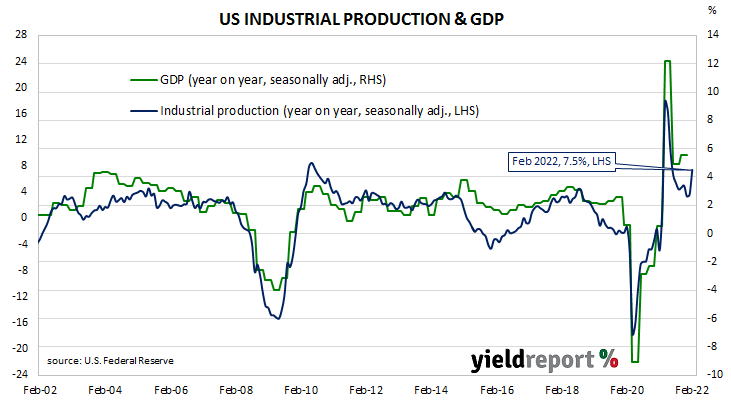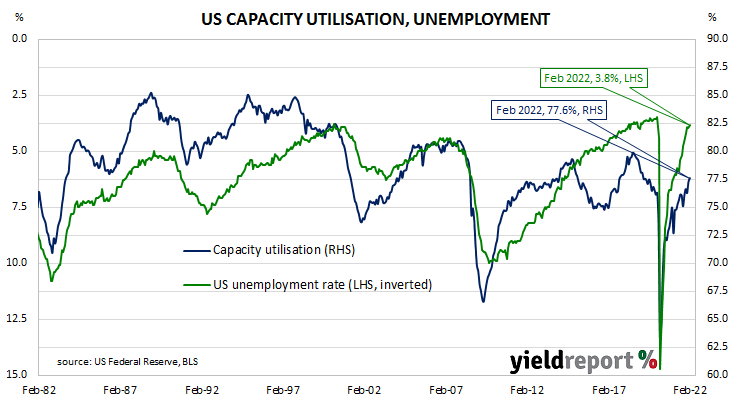Summary: US industrial output up 0.5% in February; in line with expectations; up 7.5% over past 12 months; utility output slows, non-auto manufacturing strong, auto manufacturing falls for third straight month; capacity utilisation rate up 0.3ppt to 77.6%; still short of long-term average.
The Federal Reserve’s industrial production (IP) index measures real output from manufacturing, mining, electricity and gas company facilities located in the United States. These sectors are thought to be sensitive to consumer demand and so some leading indicators of GDP use industrial production figures as a component. US production collapsed through March and April of 2020 before recovering the ground lost over the fifteen months to July 2021.
According to the Federal Reserve, US industrial production expanded by 0.5% on a seasonally adjusted basis in February. The result was in line with expectations but noticeably less than January’s 1.4% expansion. On an annual basis, the expansion rate picked up from January’s revised figure of 3.6% to 7.5%.
“Weakness in utility output, related to natural gas supplies, offset strong non-auto manufacturing. Auto manufacturing fell for a third straight month, possibly reflecting a shortage of semiconductors,” said ANZ Head of Australian Economics David Plank.
US Treasury bond yields generally moved lower on the day. By the close of business, the 2-year Treasury yield had shed 3bps to 1.92%, the 10-year yield had lost 2bps to 2.17% while the 30-year yield finished unchanged at 2.46%.
The same report includes US capacity utilisation figures which are generally accepted as an indicator of future investment expenditure and/or inflationary pressures. Capacity usage had hit a high for the last business cycle in early 2019 before it began a downtrend which ended with April 2020’s multi-decade low of 64.2%. February’s reading jumped from January’s revised reading of 77.3% to 77.6%, which is above February 2020’s reading of 76.3% but still short of the long-term average of 80.1%.
While the US utilisation rate’s correlation with the US jobless rate is solid, it is not as high as the comparable correlation in Australia.



